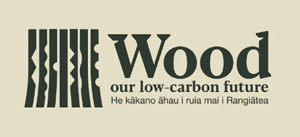Investment is about creating wealth. To achieve this you have to grow your capital at a rate faster than inflation. There are a number of opportunities available to you and each one carriers certain risks in exchange for promised returns.
Then there is forestry.
The significant difference with a forestry investment is that it’s real. We literally grow your wealth for you.
Forestry is sustainable
Wood is good. It is a renewable resource and a carbon sink, sequestering and locking in carbon throughout its life. The role that forests play in countering the effects of climate change have never been so important as they are today. And aside from its economic benefits, wood feels good and it has high utilitarian, social and environmental value.
Forestry is tangible
Forestry is one of very few tangible investments. A tree is a solid living thing which you can touch and experience. Trees can’t be moved or be stolen; they are always there. You can visit your forest and will always be surprised how much your trees have grown.
Forestry is profitable
The natural growth of a forest as a crop requires little manipulation to realise its value. It keeps growing in value, literally. Combine this with skilful interventions of an experienced forest manager and profitability is maximised.
Latest investment opportunities
Wood: our low-carbon future
Wood: our low-carbon future showcases New Zealand’s plantation forestry sector, and the many lifestyle benefits of forests and wood resources. Go to the Wood: our low-carbon future website for stories about carbon, trees on farms, engineered timber, and the people helping to deliver a positive economic and environmental future through forestry in New Zealand.
Sustainable forestry in New Zealand
In 2013, we helped the New Zealand Farm Forestry Association and the Ministry for Primary Industries tell the story of sustainable forestry in New Zealand. Sustainability of forest management in New Zealand is monitored through an international system called the Montreal Process.
This short video features a number of our contractors and partners and features the full range of forest activity from planting to export.
We manage around 34,000 hectares of radiata pine forest on behalf of Forest Enterprises investors and private landowners. Read more about forestry in the Wairarapa, Gisborne and Hawkes Bay.



